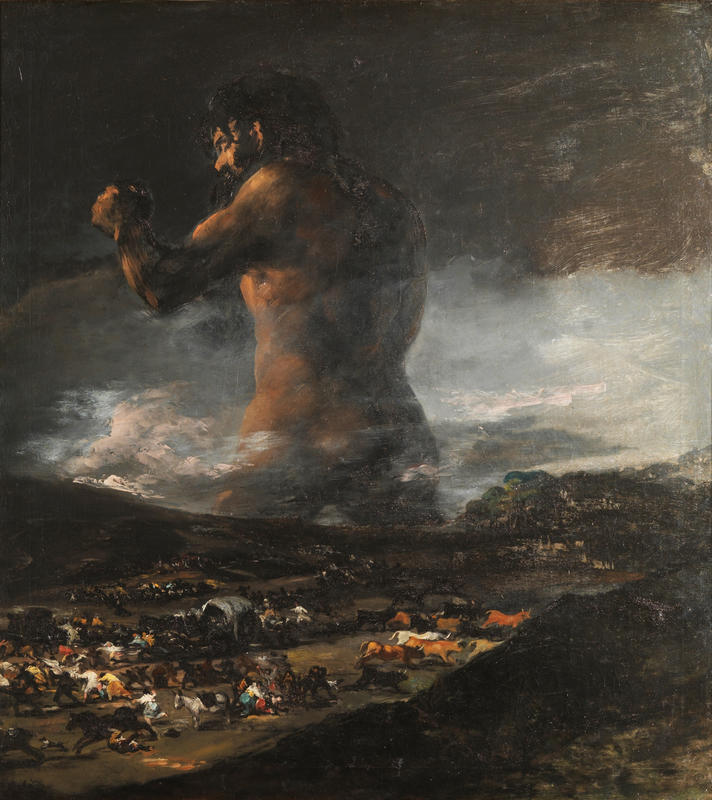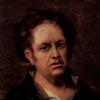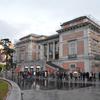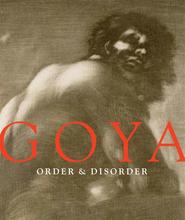More about The Colossus
- All
- Info
- Shop

Sr. Contributor
The Colossus is a painting that’s held a commanding presence for centuries now; in recent decades its prominence in art world discourse has largely been due to questions of authorship.
Originally thought to be the work of Francisco de Goya, restoration work in the 1990s led to some upraised brows. Once it was cleaned up, scholars found some noticeable differences in the painting’s handiwork when compared to Goya’s other pieces. Also, an X-ray revealed the top half of a pair of initials that belong to his assistant, Asencio Julia. However, some argue the faded marks interpreted as “AJ” are meant to be “18.” It’s also been pointed out that on one of Julia’s few known paintings, The Shipwreck, he signed his whole name rather than using his initials.
In 2008, the Prado museum chose to exclude the work from a Goya exhibition called “Goya in Times of War," - a shock considering The Colossus is one of his most famous pieces invoking a metaphor for war. The Colossus was painted as an allegory for the Peninsular War, when Napoleon’s army invaded and occupied Spain. Around the same time The Colossus was completed, Goya also traveled through the ruined and starving countryside and completed a series of eighty-five prints called The Disasters of War.
Following the decision to strip Goya’s name from this work, the museum published a study to back up its findings, some arguments in it claiming that the colors are “dull” and the brushstrokes of the giant seem “insecure.” Obviously, they knew there’d be a lot of heated thoughts and theories to combat. The study really only sparked a larger debate where devoted Goya scholars battled over the issue.
This is not the only one of Goya’s works where his authorship has come into question. A few years ago, one biographer claimed none of his famous Black Paintings series are of his hand. What made this painting’s debate so prominent was the museum’s choice to take such a pointed stance on the matter.
In 2021, however, the Prado museum quietly restored Goya's name alongside the work. Well, it now says “attributed to Goya” anyway, as the debate continues on. There were no findings or study released alongside the museum's decision this time. Of course, people also have conflicting opinions on the way this change was snuck back without a public announcement - especially after the museum’s expert declared in 2008 that “this work is a botched job” by Goya’s apprentice.
Regardless of who brought it to life, there are some things we can all agree on about Colossus. For instance, we can all thank its existence for inspiring Guillermo del Toro to make Pacific Rim. Unless you’re not a fan of giant robots fighting massive monsters that is, in which case I don’t understand your taste at all. Guillermo del Toro has often said his films are inspired by Goya’s work. Specifically some of Goya’s Black Paintings served as inspiration for arguably his most famous film, Pan’s Labyrinth. The filmmaker said in an interview that when he got the green light for Pacific Rim his first thought was of The Colossus. He decided his fights needed to have such an impossibly grand scale for the movie.
Regarding Goya’s own inspiration for The Colossus, the piece relates to the poem Profecia del Pirineo: “Lo on a height above yonder cavernous amphitheatre a pale Colossus rises; caught by the fiery light of the setting sun: the Pyrenees are a humble plinth for his gigantic limbs. The red clouds of the west encircle his waist and the sad light in his fiery eyes make his countenance an awesome sight to see.”
Sources
- Carr-Gomm, Sarah. “The Disasters of War.” Essay. In Francisco Goya. New York: Parkstone International, 2011.
- Cascone, Sarah. “Is It a Goya? Curators at the Prado Keep Changing Their Minds over Who Painted the Museum's Famed 'Colossus'.” Artnet News, July 15, 2021. https://news.artnet.com/art-world/prado-restores-goya-attribution-to-co….
- “Guillermo Del Toro Reveals Why He Loves Gigantor, His Inspirations for Pacific Rim and More.” Film Independent, March 11, 2016. https://www.filmindependent.org/blog/ guillermodtpacific/.
- Lubow, Arthur. “The Secret of the Black Paintings.” The New York Times. The New York Times, July 27, 2003. https://www.nytimes.com/2003/07/27/magazine/the-secret -of-the-black-paintings.html.
- McIver, Gillian. Essay. In Art History for Filmmakers: The Art of Visual Storytelling, 150–51. London ; New York ; Oxford ; New Delhi ; Sydney: Bloomsbury Academic, 2020.
- “Prado: 'Colossus' Is Not by Goya.” Los Angeles Times. Los Angeles Times, July 5, 2008. https://www.latimes.com/archives/la-xpm-2008-jul-05-et-quick5.s3-story….
- Rose, Barbara. “The Prado's Giant Leap to a Shaky Conclusion.” The Wall Street Journal. Dow Jones & Company, February 17, 2009. https://www.wsj.com/articles/SB1234826993177 95087.
- Symkus, Ed. “Guillermo Del Toro Talks Childhood, Monsters, 'Pacific Rim'.” The Holland Sentinel. The Holland Sentinel, July 9, 2013. https://www.hollandsentinel.com/story/ entertainment/local/2013/07/09/guillermo-del-toro-talks-childhood/41898061007/.
- Tremlett, Giles. “The Colossus Painted by Goya's Assistant, Says Prado Expert.” The Guardian. Guardian News and Media, January 27, 2009. https://www.theguardian.com/world/2009 /jan/27/goya-colossus-spain-prado.
- Wilkinson, Isambard. “Prado Museum Quietly Admits Giant Error over Attribution of Goya's Colossus.” World | The Times. The Times, July 8, 2021.https://www.thetimes.co.uk/ article/prado-museum-quietly-admits-giant-error-over-attribution-of-goyas-colossus-bfmqsv5bf.
Featured Content
Here is what Wikipedia says about The Colossus (painting)
The Colossus (also known as The Giant), is known in Spanish as El Coloso and also El Gigante (The Giant), El Pánico (The Panic) and La Tormenta (The Storm). It is a painting traditionally attributed to Francisco de Goya that shows a giant in the centre of the canvas walking towards the left hand side of the picture. Mountains obscure his legs up to his thighs and clouds surround his body; the giant appears to be adopting an aggressive posture as he is holding one of his fists up at shoulder height. A dark valley containing a crowd of people and herds of cattle fleeing in all directions occupies the lower third of the painting.
The painting became the property of Goya's son, Javier Goya, in 1812. The painting was later owned by Pedro Fernández Durán, who bequeathed his collection to Madrid's Museo del Prado, where it has been kept since 1931.
Check out the full Wikipedia article about The Colossus (painting)













